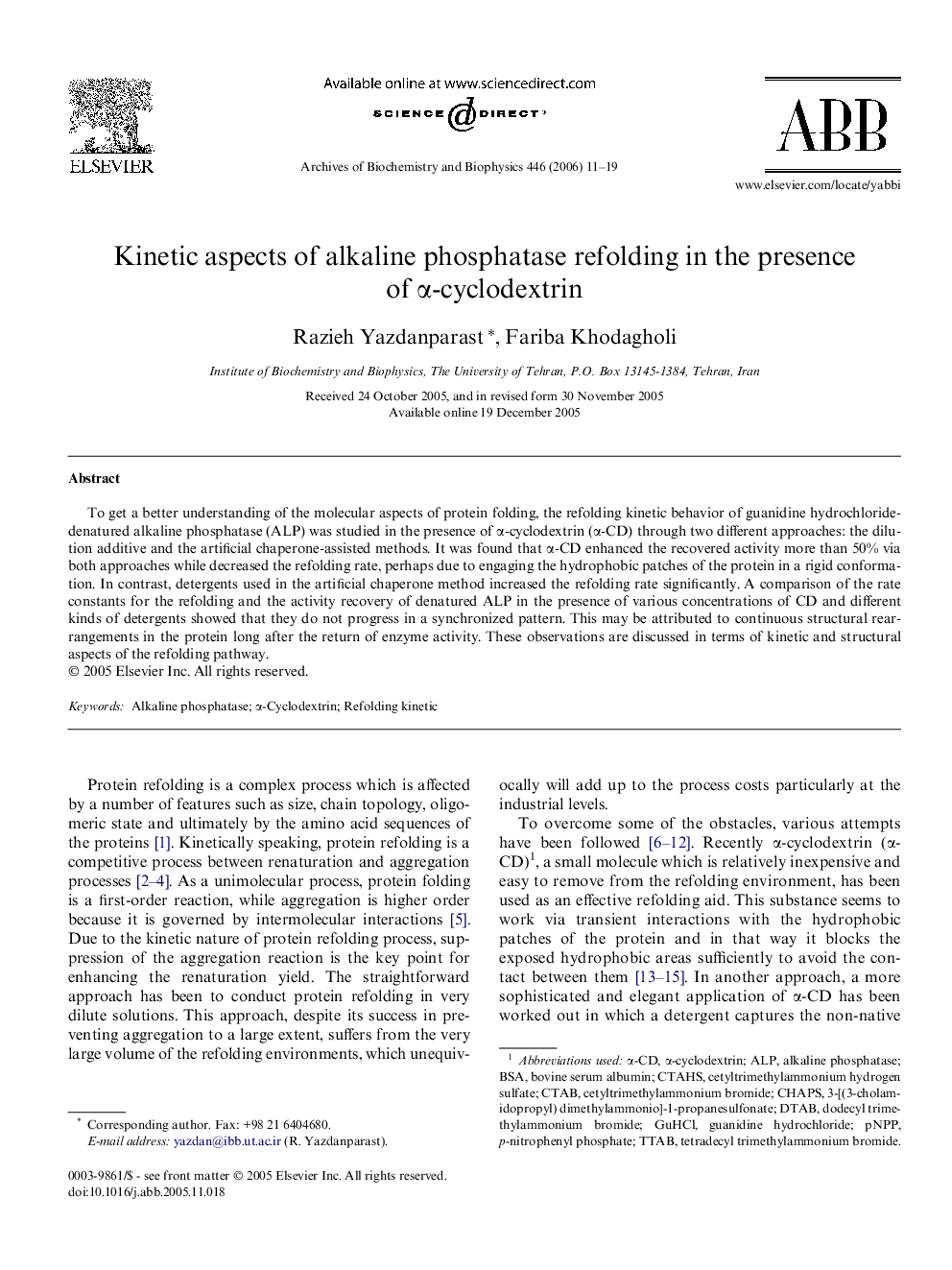| Article ID | Journal | Published Year | Pages | File Type |
|---|---|---|---|---|
| 1927623 | Archives of Biochemistry and Biophysics | 2006 | 9 Pages |
To get a better understanding of the molecular aspects of protein folding, the refolding kinetic behavior of guanidine hydrochloride-denatured alkaline phosphatase (ALP) was studied in the presence of α-cyclodextrin (α-CD) through two different approaches: the dilution additive and the artificial chaperone-assisted methods. It was found that α-CD enhanced the recovered activity more than 50% via both approaches while decreased the refolding rate, perhaps due to engaging the hydrophobic patches of the protein in a rigid conformation. In contrast, detergents used in the artificial chaperone method increased the refolding rate significantly. A comparison of the rate constants for the refolding and the activity recovery of denatured ALP in the presence of various concentrations of CD and different kinds of detergents showed that they do not progress in a synchronized pattern. This may be attributed to continuous structural rearrangements in the protein long after the return of enzyme activity. These observations are discussed in terms of kinetic and structural aspects of the refolding pathway.
